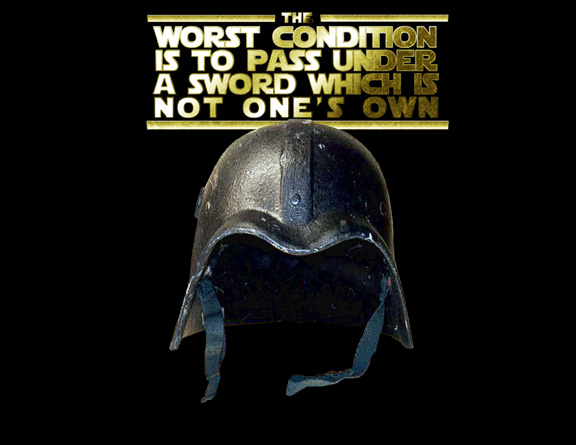
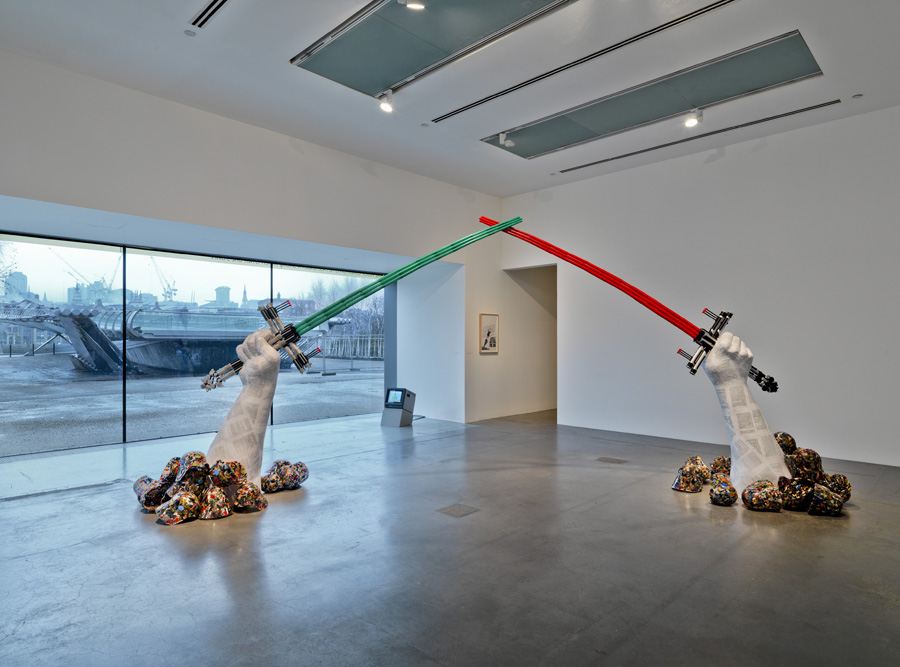
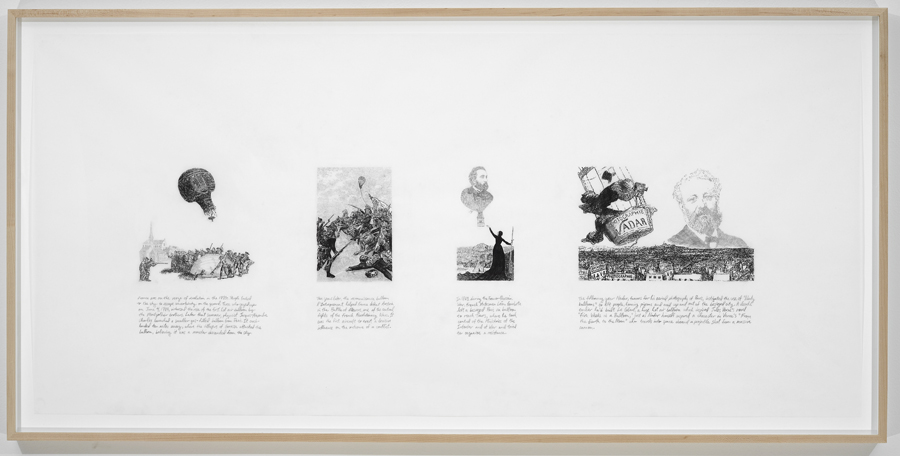
The narrative begins with the development of the hot air balloon in late 18th-century France as a visionary form of transport and transcendence that eventually was used for surveillance purposes. Jules Verne acts as a transitional figure, moving the story up to the 20th century and genius arms designer Gerald Bull, who as a boy imagined building a gun that could, as in Verne’s “From the Earth to the Moon,” fire payloads into outer space. Working in the 1980s for Iraqi dictator Saddam Hussein, he nearly succeeded—but he was murdered by foreign agents shortly before completing the weapon of his dreams, code-named “Project Babylon.”

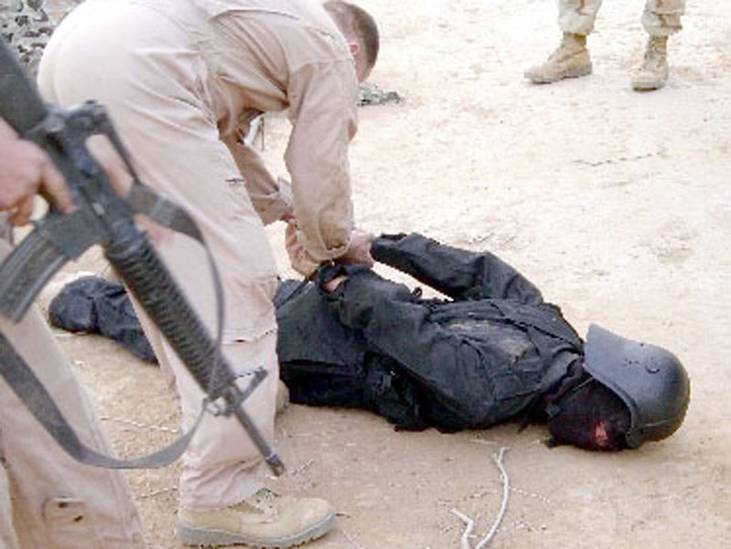
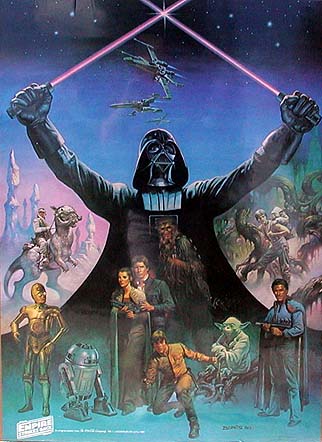
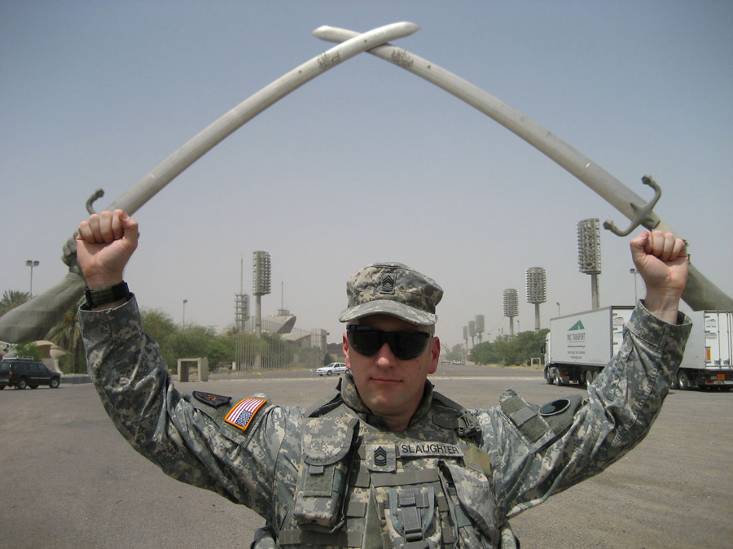
Bull’s aborted project was not the only part of Hussein’s armory designed under the sign of fantasy. The installation also explores the influence of the Star Wars movies on the uniforms worn by the Fedayeen Saddam, an elite militia whose members dressed like Darth Vader. The paramilitary group was under the leadership of Saddam’s son, Uday, who was an avid fan of George Lucas’ space opera. Saddam’s design of the Victory Arch in Baghdad echoes the crossed lightsabers in a famous Star Wars poster illustrated by Boris Vallejo whose best friend, Rowena Morrill, authored paintings that were found in the Iraqi leader’s palaces. And, on the eve of the first Gulf War, the Iraqi Army paraded underneath the Arch to the theme song from Star Wars for Iraqi TV cameras.

The installation’s title derives from a saying of Hussein’s that appeared on the invitation card for the inauguration of the Arch, built in 1989 to commemorate Iraq’s “victory” over Iran. The original monument features swords cast from weapons used in the Iran-Iraq War and features 2,500 helmets of vanquished Iranians cascading at its base. A large-scale sculpture reproduces this monument in materials that connect with the theme of boyhood fantasy: dozens of plastic light sabers for the Arch, GI Joe figurines encased in resin for the helmets (modeled on the Fedayeen’s own Vader-like helmets) that surround the sculpture’s base.
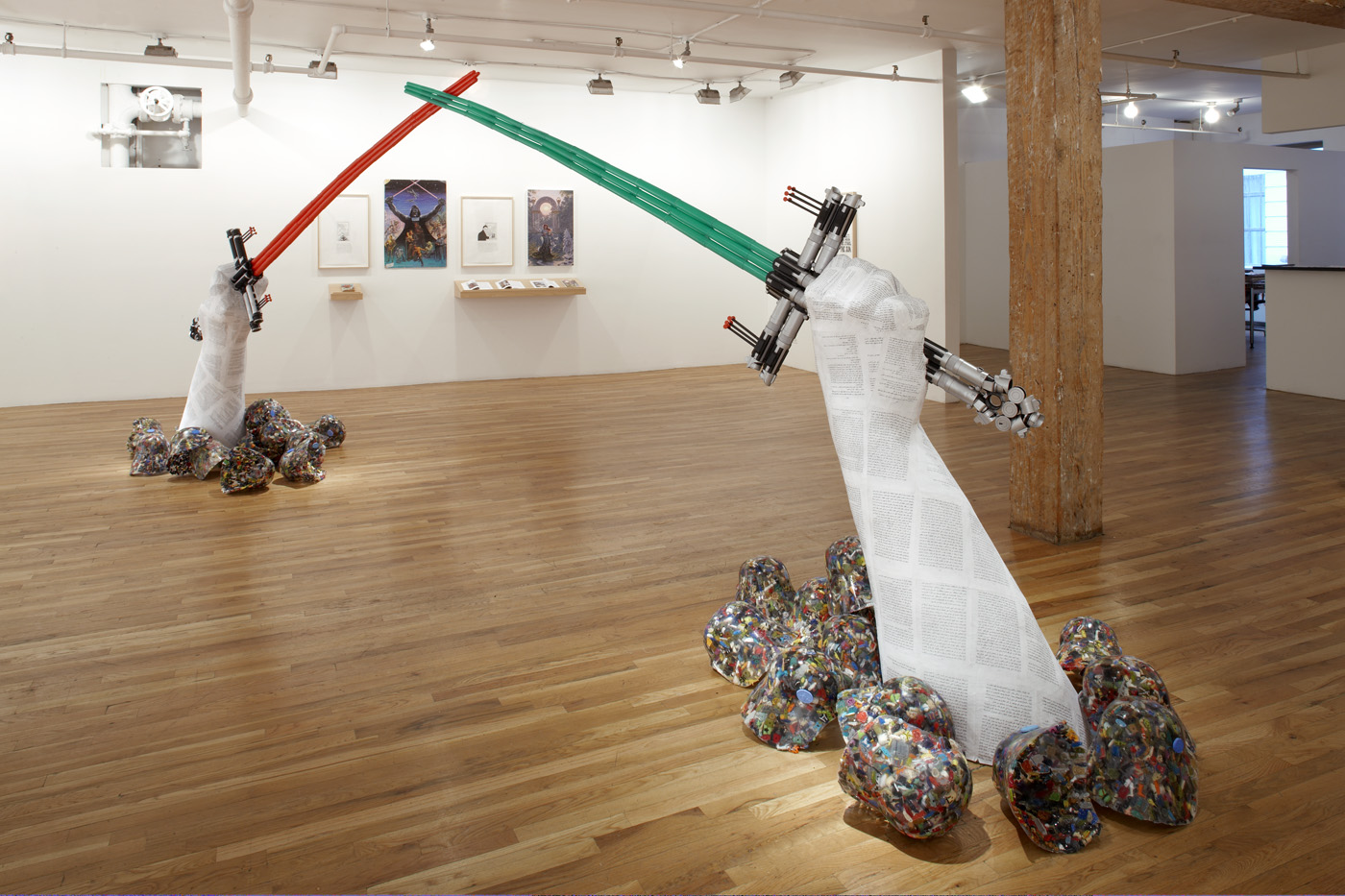
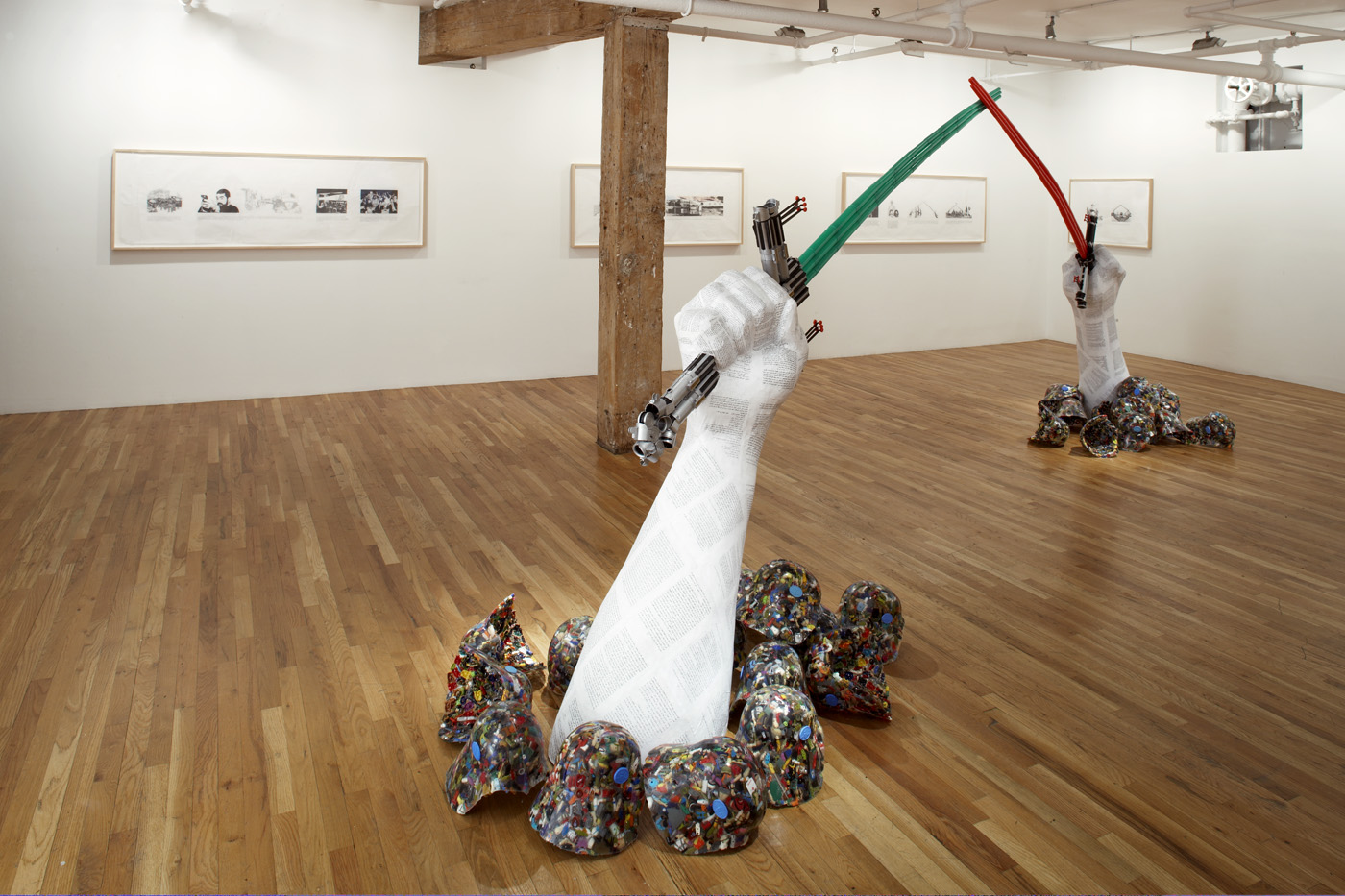

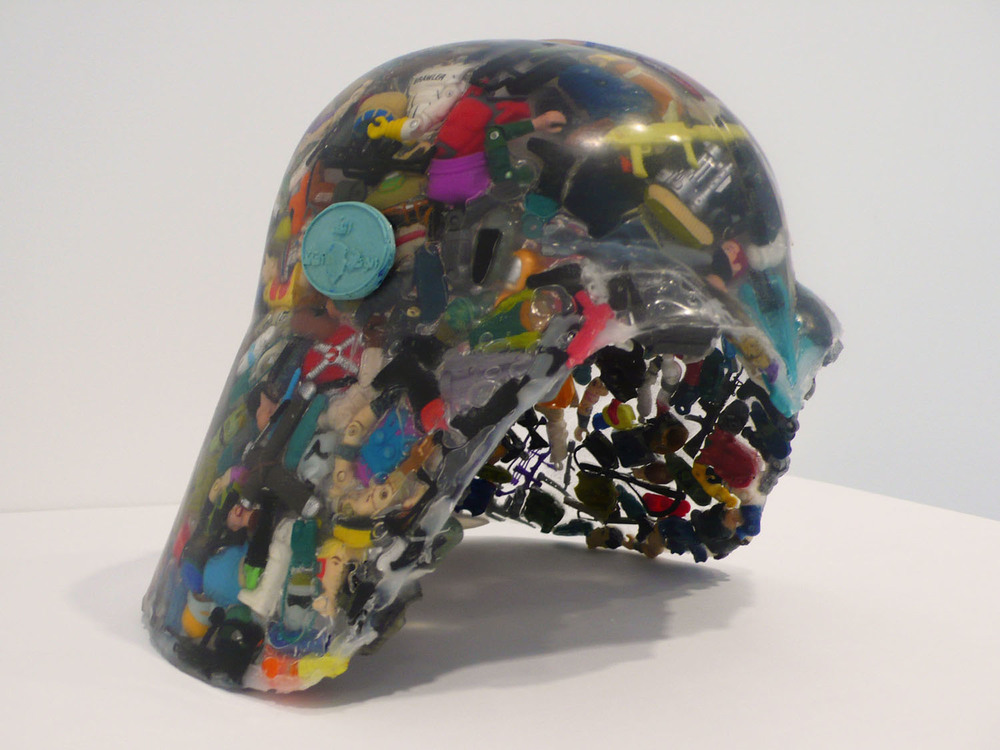

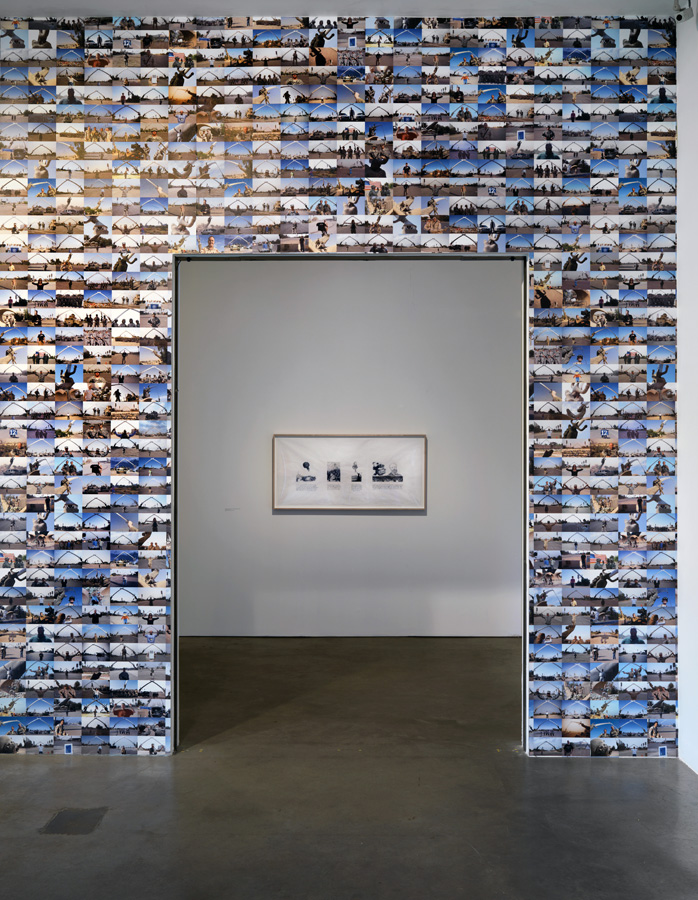
The entrance to the exhibition space is framed by wallpaper featuring the hundreds of photographs found on soldiers’ blogs, Flickr accounts and other sources that feature military officers and contractors posing in front of the Victory Arch.

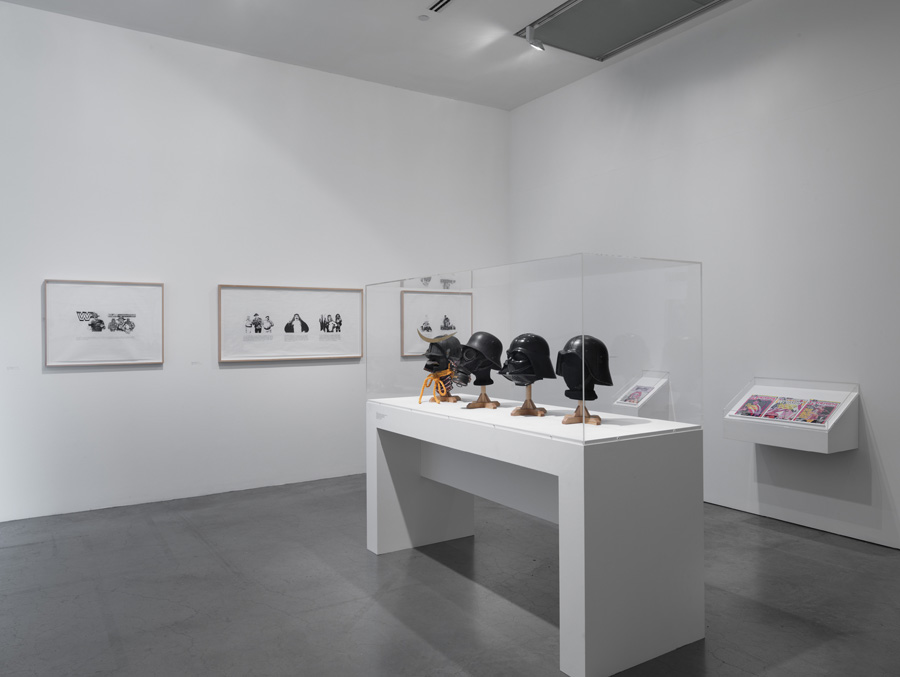
A vitrine displays a Japanese Samurai helmet along with a World War I German army helmet and gas mask. These three elements served as the inspiration for Darth Vader’s armor.

Next to these examples sit Darth Vader’s helmet and one of the Iraqi Fedayeen Saddam helmets, thus conveying a timeline where examples from the battlefield inspire a Hollywood filmic mythology, which in turns inspires armor found on the battlefield.

The project’s final image is of Hussein’s face on the moon—the moon every boy and world leader dreamed of reaching—seen through a telescope whose shape is derived from Bull’s ill-fated Project Babylon supergun, and is constructed from the boxes of toy military models. Rumors of this lunar vision spread on the night Hussein was hanged, echoing rumors that had circulated four decades earlier, the night of the execution of Qassim, the Iraqi ruler who Saddam eventually replaced.

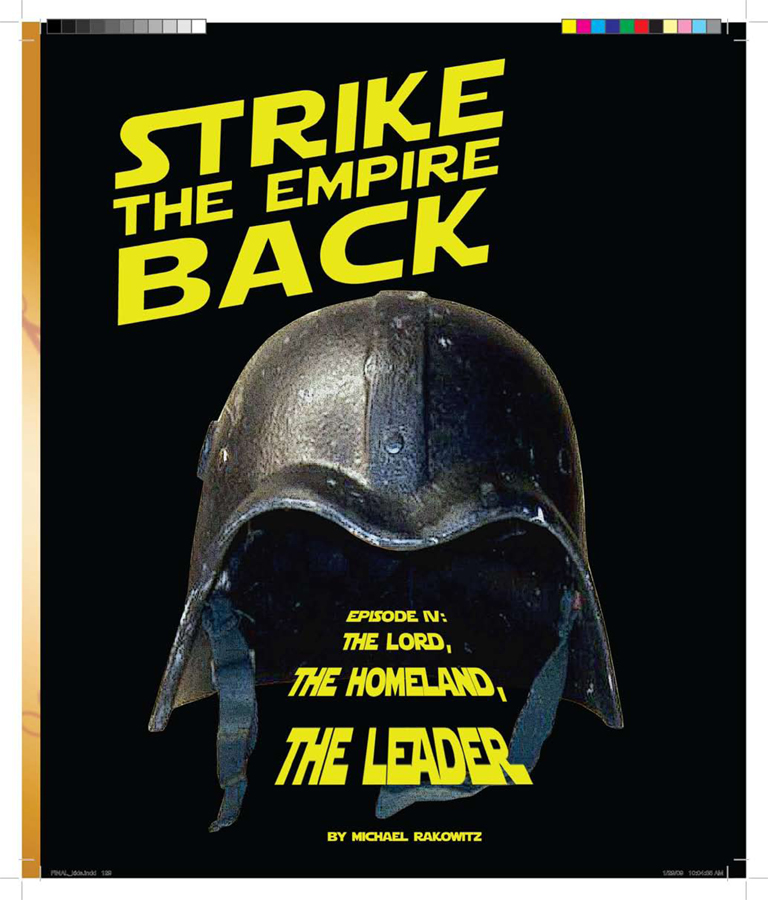
A free comic book was published as a component of the exhibition and was also printed in Bidoun Magazine, Issue 16.
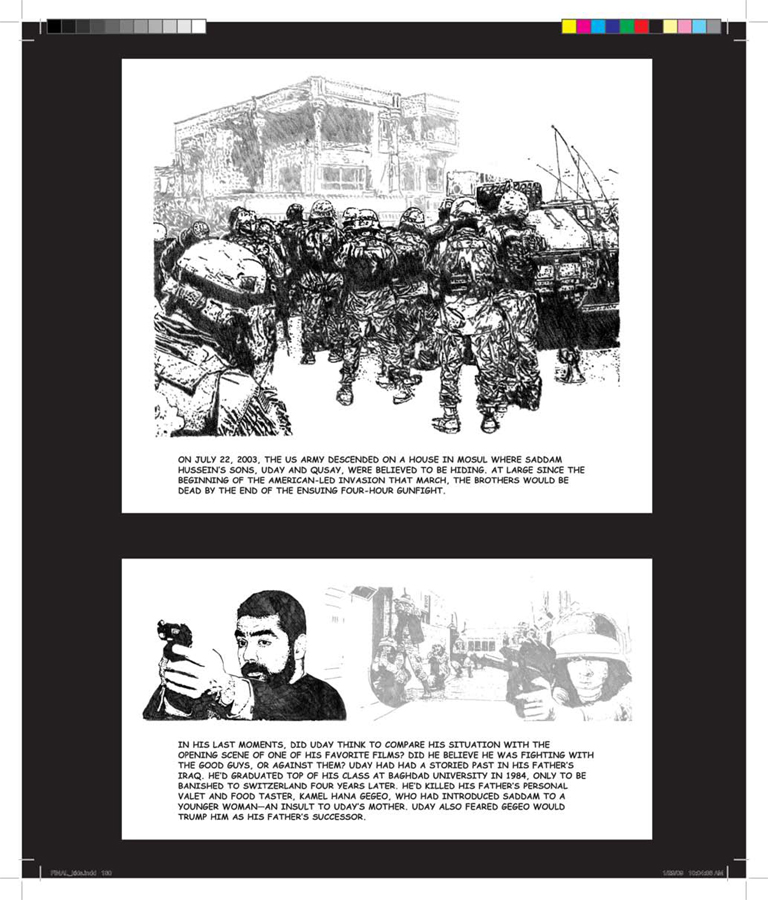
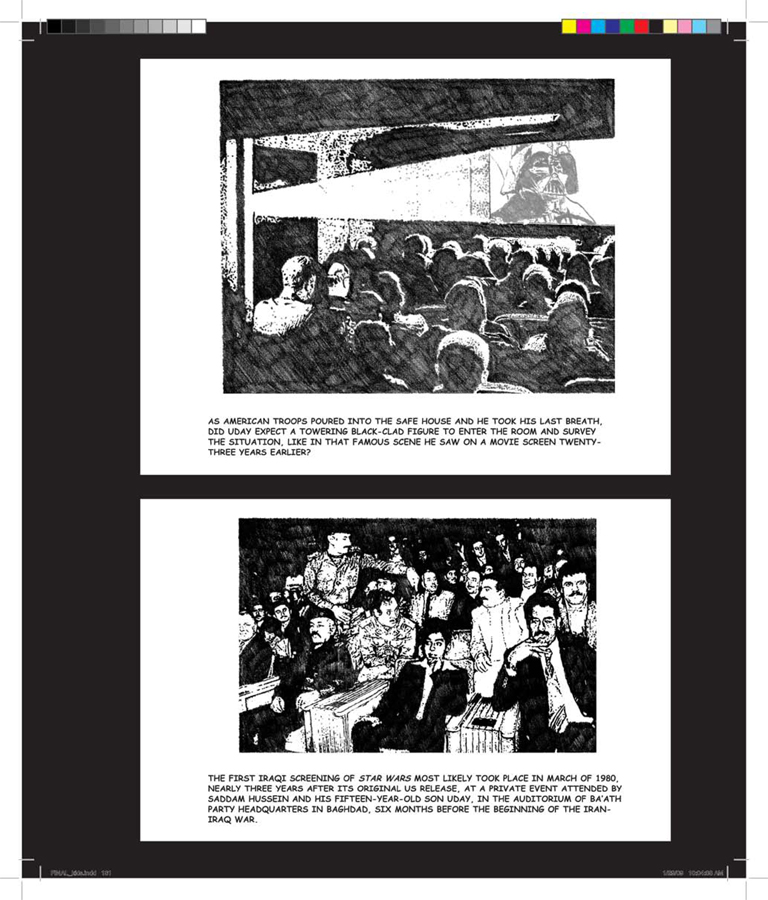

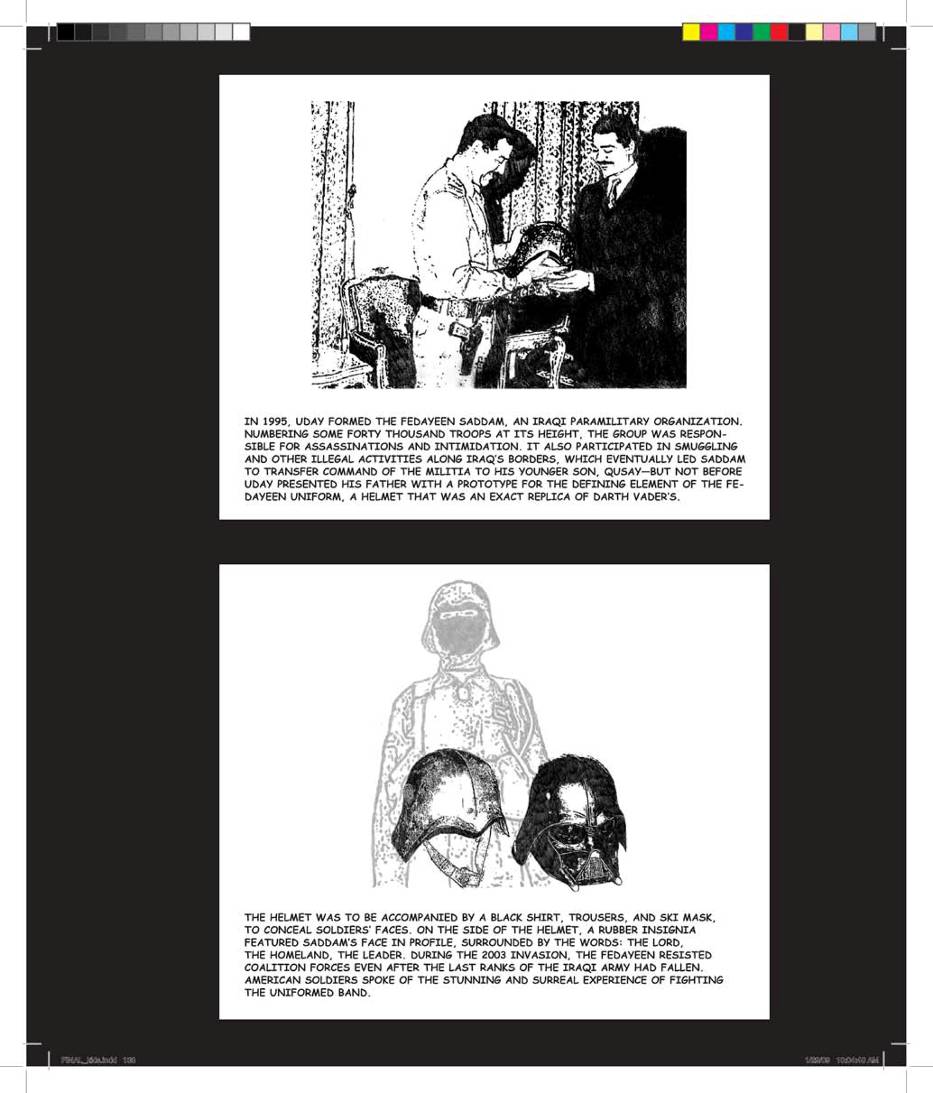
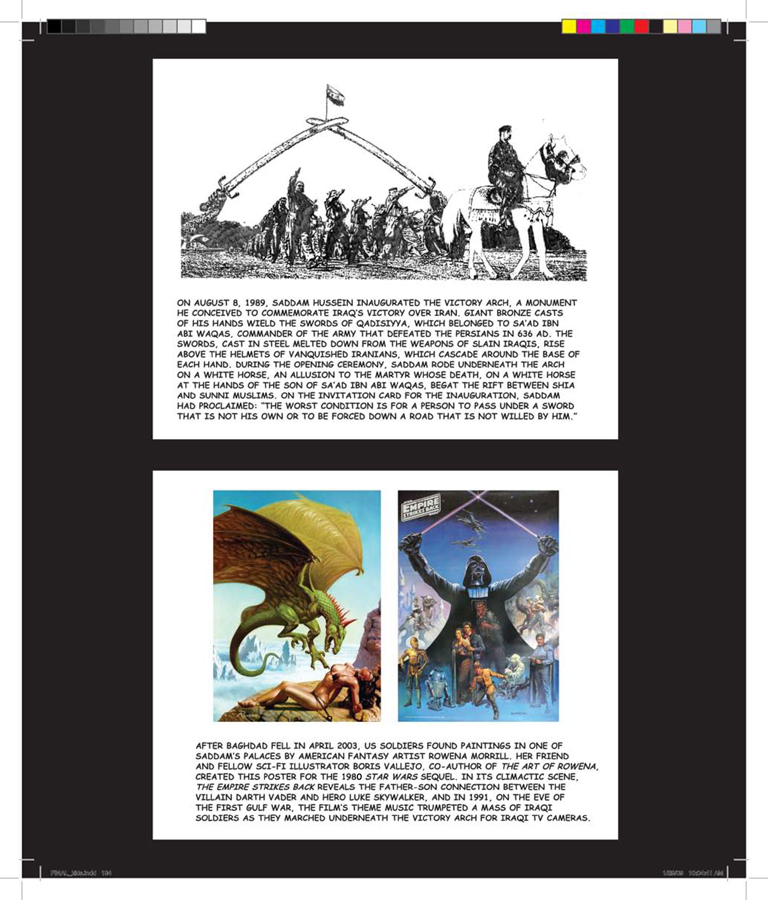

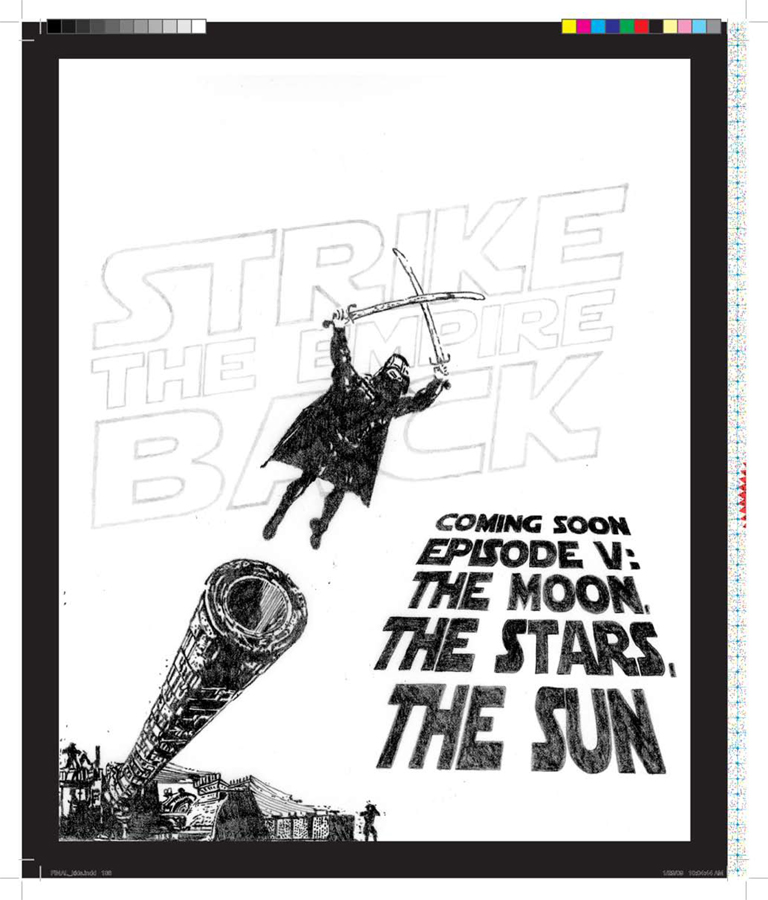



























The narrative begins with the development of the hot air balloon in late 18th-century France as a visionary form of transport and transcendence that eventually was used for surveillance purposes. Jules Verne acts as a transitional figure, moving the story up to the 20th century and genius arms designer Gerald Bull, who as a boy imagined building a gun that could, as in Verne’s “From the Earth to the Moon,” fire payloads into outer space. Working in the 1980s for Iraqi dictator Saddam Hussein, he nearly succeeded—but he was murdered by foreign agents shortly before completing the weapon of his dreams, code-named “Project Babylon.”
Bull’s aborted project was not the only part of Hussein’s armory designed under the sign of fantasy. The installation also explores the influence of the Star Wars movies on the uniforms worn by the Fedayeen Saddam, an elite militia whose members dressed like Darth Vader. The paramilitary group was under the leadership of Saddam’s son, Uday, who was an avid fan of George Lucas’ space opera. Saddam’s design of the Victory Arch in Baghdad echoes the crossed lightsabers in a famous Star Wars poster illustrated by Boris Vallejo whose best friend, Rowena Morrill, authored paintings that were found in the Iraqi leader’s palaces. And, on the eve of the first Gulf War, the Iraqi Army paraded underneath the Arch to the theme song from Star Wars for Iraqi TV cameras.
The installation’s title derives from a saying of Hussein’s that appeared on the invitation card for the inauguration of the Arch, built in 1989 to commemorate Iraq’s “victory” over Iran. The original monument features swords cast from weapons used in the Iran-Iraq War and features 2,500 helmets of vanquished Iranians cascading at its base. A large-scale sculpture reproduces this monument in materials that connect with the theme of boyhood fantasy: dozens of plastic light sabers for the Arch, GI Joe figurines encased in resin for the helmets (modeled on the Fedayeen’s own Vader-like helmets) that surround the sculpture’s base.
The entrance to the exhibition space is framed by wallpaper featuring the hundreds of photographs found on soldiers’ blogs, Flickr accounts and other sources that feature military officers and contractors posing in front of the Victory Arch.
A vitrine displays a Japanese Samurai helmet along with a World War I German army helmet and gas mask. These three elements served as the inspiration for Darth Vader’s armor.
Next to these examples sit Darth Vader’s helmet and one of the Iraqi Fedayeen Saddam helmets, thus conveying a timeline where examples from the battlefield inspire a Hollywood filmic mythology, which in turns inspires armor found on the battlefield.
The project’s final image is of Hussein’s face on the moon—the moon every boy and world leader dreamed of reaching—seen through a telescope whose shape is derived from Bull’s ill-fated Project Babylon supergun, and is constructed from the boxes of toy military models. Rumors of this lunar vision spread on the night Hussein was hanged, echoing rumors that had circulated four decades earlier, the night of the execution of Qassim, the Iraqi ruler who Saddam eventually replaced.
A free comic book was published as a component of the exhibition and was also printed in Bidoun Magazine, Issue 16.